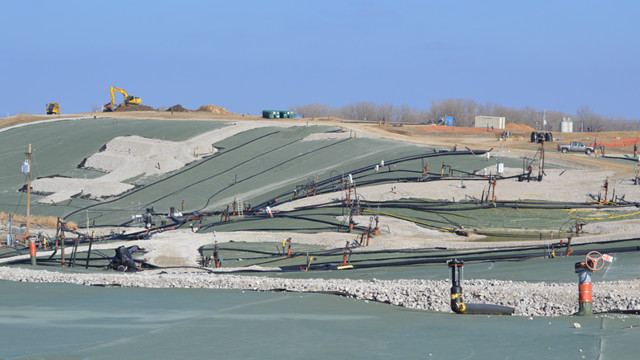Hot Garbage
While national attention is focused on the water contamination scandal in Flint, Michigan, — including what critics charge is the federal Environmental Protection Agency’s complicity in the ongoing crisis — residents and lawmakers in Missouri say the agency is ignoring the risks of an underground landfill fire in St. Louis County.
Missouri lawmakers, acting on pressure from their constituents, are now seeking to remove the EPA from managing a site known as the West Lake Landfill, which contains illegally dumped nuclear waste left over from the Manhattan Project. The site has been under the agency’s watch since 1990, when it was brought under the Superfund program for emergency and hazardous waste cleanup. Residents worry that a long-simmering underground fire at an adjacent, inactive waste facility, known as the Bridgeton Landfill, —part of the larger West Lake complex— is spreading. In a worst-case-scenario, they worry, it will come in contact with the nuclear materials buried next door.

The north quarry of the Bridgeton Landfill.
The Environmental Protection Agency has maintained there has been no leakage of radioactive material from West Lake that would endanger human health. But the Missouri Attorney General’s office conducted its own investigation, finding the fire had already passed underground safeguards and was moving toward the radioactive waste.
That investigation also detected radioactive contamination on trees outside the landfill.
“The official position that nothing’s moving is simply stupid,” said Bob Criss, a geochemist at Washington University in St. Louis. “It’s geochemically impossible.”
The EPA refused to make an official available to answer Undark’s questions regarding the landfill fire and the adjacent nuclear waste site directly. Benjamin Washburn, a public relations specialist for EPA Region 7, did however respond to an email inquiry, stating that current monitoring data does not indicate the fire is rapidly moving towards the radioactive material.
That material, reportedly leached barium sulfate residue from uranium ore processing, arrived at West Lake in 1973 and was mixed with soil to cover incoming waste.
But even the composition of the material is a point of contention.
“What is buried there isn’t what they say it is,” Criss said. “There is no evidence that there’s barium sulfate there.” He wrote a report showing that the levels of barium sulfate in the soil are at levels normal for ordinary dirt, and are not proportional to the amount the EPA claims was buried at West Lake. He said determining the composition of the waste should be a priority.
“We analyze stuff all the time,” Criss said. “We can characterize things. We’re very good at it. So why all the mystery?”
For his part, Criss says he believes the EPA must be aware of the full extent of the potential hazards. “I am certain there is a huge amount of illegal activity going on here,” he said. “There’s a heck of a lot of mismanagement of dangerous radioactive waste.”
Landfill fires — both aboveground and below – are fairly common, and thousands can be burning at any given time in the United States, according to federal data. The Bridgeton Landfill fire is exothermic — technically not a fire, but a sustained chemical reaction arising from the steady decomposition of waste. Monitoring and containing such events, which can emit noxious smells and fumes and quickly grow out of control if left unaddressed, are key parts of landfill management.
Republic Services, the owner of Bridgeton Landfill, announced in 2013 that it planned to build an earthen trench to help halt the fire’s spread, but the EPA held up the plan, saying it needed more data on the location of the adjacent radioactive material. Though the EPA finally agreed to build the firebreak last December, critics of the agency said they had lost confidence in its handling of the site.
A bipartisan bill sponsored by Missouri senators Roy Blunt, a Republican, and Democrat Claire McCaskill, would transfer control of the site to the Army Corps of Engineers. The bill passed in the Senate earlier this month, and a companion bill now awaits a House vote.
Dawn Chapman, who lives on the border of Bridgeton and co-founded Just Moms STL, a group that advocates for residents affected by the Superfund site, said she’d like to see the Army Corps of Engineers placed in charge of the West Lake facility, pointing to their record of managing other Superfund sites in the region.
She added that the chemical fire in the Bridgeton landfill has an odor with notes of sulfur and petroleum, like a “ripe trashcan in the summer.”
“This isn’t just banana peels,” Chapman said.









